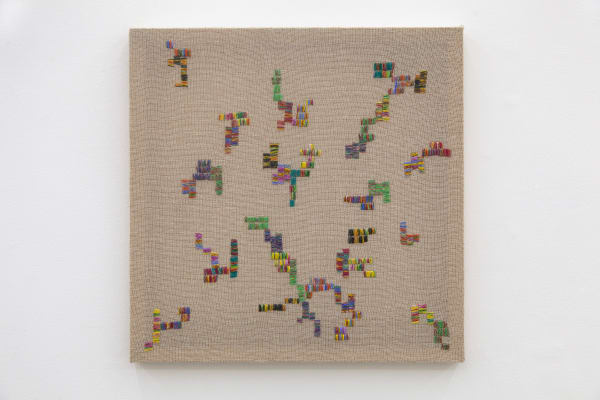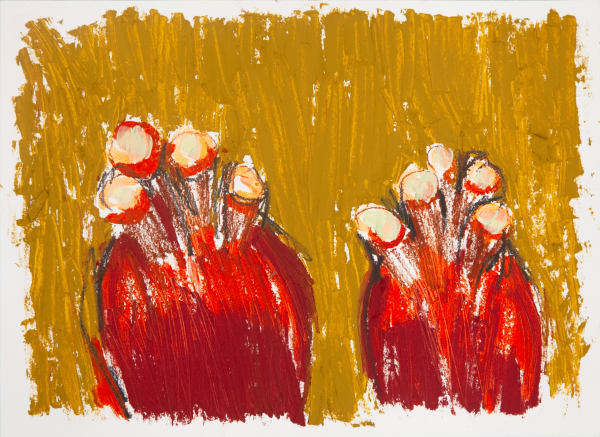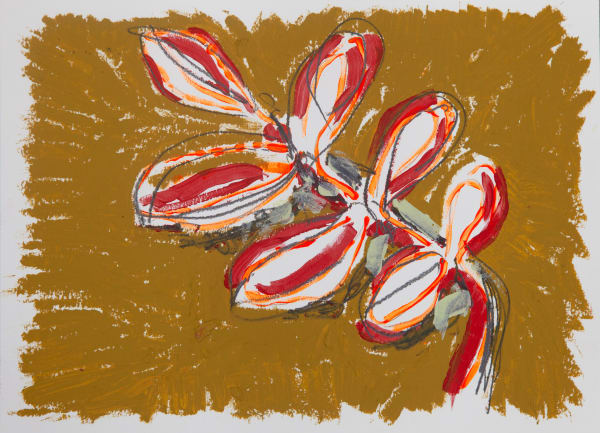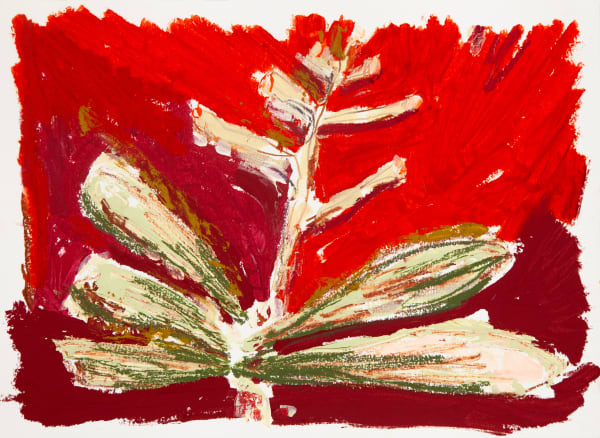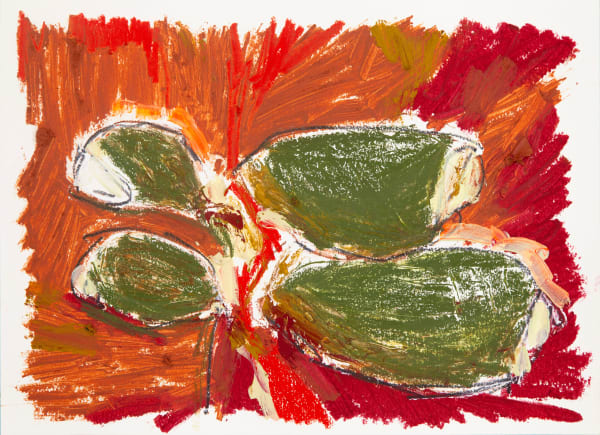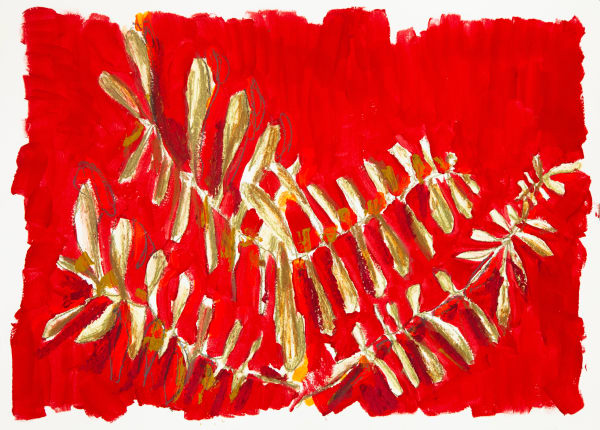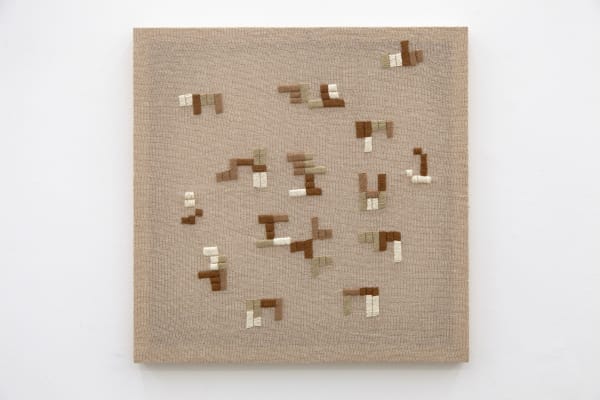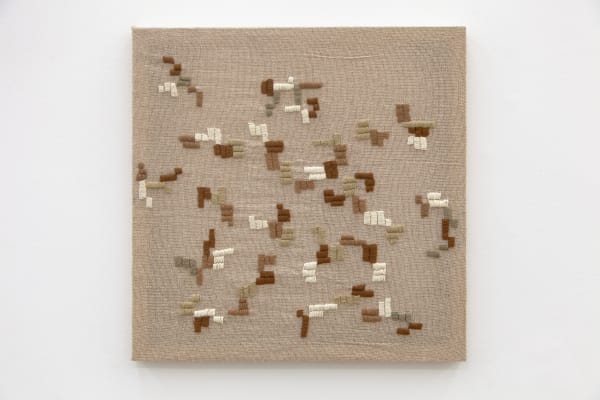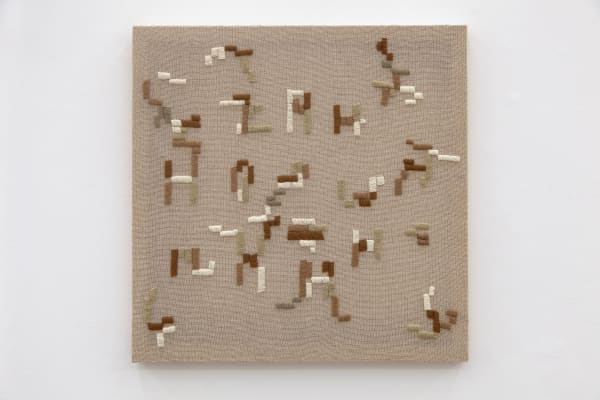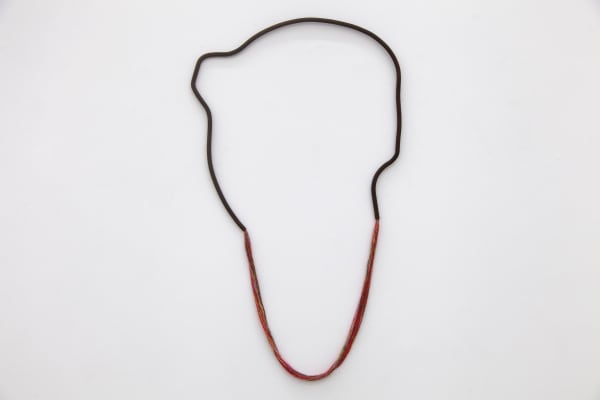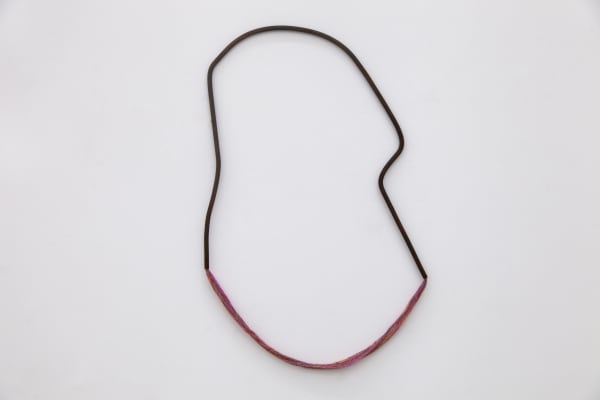Raquel Versieux: Retorno ao ferro enquanto aguardo o algodão florescer
In Retorno ao ferro enquanto aguardo o algodão florescer [Return to the iron while I wait for the cotton to bloom], Raquel Versieux shows us that there is a determining presence that needs to be recognized, despite it often being hidden. This starts through the title, in which the terms "return" and "wait" are verbs conjugated in the simple present tense, first person singular: I return to the iron while I wait for the cotton to bloom. At the moment of writing, “I” refers directly to the artist. However, during reading, it incorporates all those who read the name of this exhibition. This collectivity of selves triggered by the title populates the entire exhibition, and the artist's nearly two decades of production. Born in Minas Gerais, Raquel Versieux has been building a body of work that explores the desire to investigate the landscape, but not just any landscape. The artist is interested in places that are marked by the presence and action of the human body, with its political, social, economic, poetic, historical, and everyday developments. Places mediated by mining and monoculture; by political and social organizations for environmental protection and land rights, and Carlos Drummond de Andrade.
This exhibition brings together works developed in the context of the community-based art project Manejo Movente, which has Raquel as one of its founders, and promotes exchanges between contemporary art and political management in the social contexts of territories since 2019. When she moved three years earlier (2016) to Cariri, state of Ceará, to also work as a professor at the Universidade Regional do Cariri, the artist felt the echo of questions that moved her in relation to the landscape in the setting of Minas Gerais. Nonetheless, she was many kilometers away and in a di erent context. In the Cariri region, the dimension of a political landscape involves other aspects about land use and its histories, di erent biomes and historical heritages, access to water (or lack thereof), as well as the relations of tension between urban and rural areas, including diferent regions of the country. The artist states that in her process, marked by the play on words erosion and erection, today the landscape of Minas Gerais would relate more to erosion. On the other hand, in Cariri she understands her interest shifting towards the erection of counter-narratives. In 2019, Manejo Movente was Versieux's proposal for the 36º Panorama da Arte Brasileira – Sertão, held at the Museu de Arte Moderna de São Paulo. It presented practices and discussions that involved and involve people living in two distinct rural communities in the municipality of Crato: the April 10th Settlement – MST (Movement of the Landless Rural Workers), located in the district of Monte Alverne, and Baixio das Palmeiras, where a memory and resistance space called Casa de Quitéria is located.
The ruby cotton used in some of the works in this exhibition is the result of a plantation project developed by the collective. In the installation Retorno ao Ferro [Return to Iron] (2023), nine iron tubes, each two meters high, have the holes on their surfaces punctured by cotton wads. Iron and cotton, seemingly different materials, reveal land management through their brutality and delicacy, in expropriation and sowing, in Minas Gerais and Cariri. In the series Escritos do Temporal [Temporal Writings], produced since 2021, raw organic cotton transformed into yarn is the base for the embroideries made by the artist. The process is a conversation with the women of previous generations of her family, whom the artist remembers being skillfully trained, accomplished, and prepared to weave, spin, embroider, crochet, knit, sew, lace, and bole. The process of embroidery also resembles the act of writing, constructing forms that in the end resemble a kind of language to be decoded. The notions of ancestry and communication are also present in the term "temporal," which composes the work’s title, and refers to the oral element of time as well. The cultivation of cotton also marks Semeadeiras [Seeders] (2023), where iron dowels hold strings made of hand-braided chintz. These semi-necklaces preserve the presence of the Manejo Movente participants in their forms. The shapes of the iron refer to silhouettes at di erent moments throughout the planting, sowing, and harvesting of the cotton. [Return to the iron while I wait for the cotton to bloom] is therefore harvesting and replanting all at once.
Fernanda Lopes
![Raquel Versieux Amantes da festa #1, 2023 Bordado manual com tecido de chita desfiado sobre trama de algodão naturalmente colorido [Hand embroidery with frayed calico fabric on naturally colored cotton fabric] 50 x 50 cm 19 3/4 x 19 3/4 in](https://artlogic-res.cloudinary.com/w_800,h_800,c_limit,f_auto,fl_lossy,q_auto/artlogicstorage/galeriaathena/images/view/6de00582a1ca79194fe4c96592c935b8j/galeriaathena-raquel-versieux-amantes-da-festa-1-2023.jpg)



